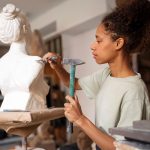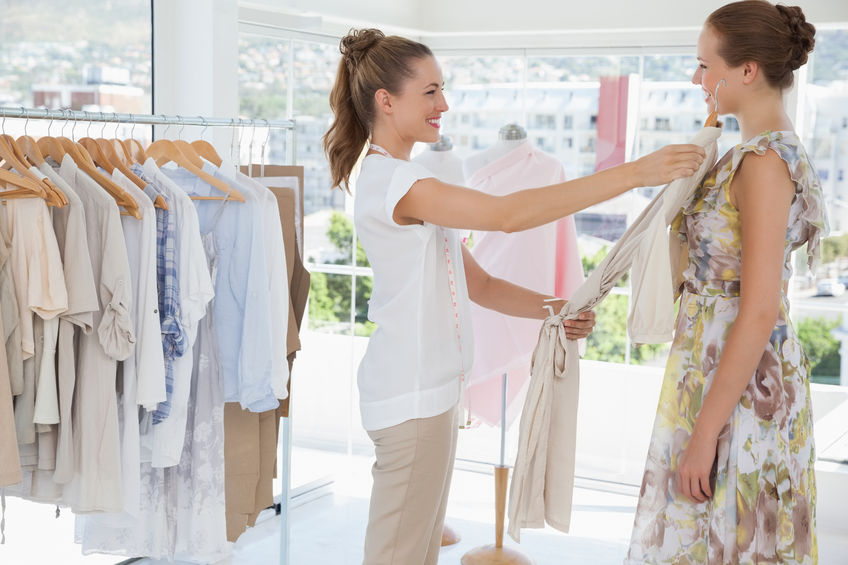The Benefits of Using a Personal Shopper to Save You Precious Time, Money and Mental Stamina
At some point in one’s career, there comes a time when one needs to invest in a more grown-up, sophisticated wardrobe. And as a leader, it also helps when one’s wardrobe is fashionable; leadership is earned, and not only does one have to be good at one’s job, but it helps of course to look the part! But who has time to figure out how to pair fashionable outfits, and then take the time to go find them at the mall?
Before you wrinkle your nose at the next comment, please take a moment to consider it thoroughly: it’s wise to invest time in developing a relationship with a personal shopper. At first this will sound outrageous – however, the truth is that taking one afternoon to visit a department store or boutique to meet with a personal shopper (or two or three, in order to find the right person for you) can be the beginning of a fashionable, fun and budget-effective wardrobe.
The Practicalities of Using a Personal Shopper
- Where to find a personal shopper? Department stores like Nordstrom, Neiman Marcus, Saks, and Macy’s all offer personal shopping services. Smaller boutiques often offer personal shopping services as well.
- A personal shopper will ask you a number of questions about you, your work, your lifestyle, and preferences. S/he will also likely go through your closet, to determine what you already have, and help you build upon it.
- Most importantly, s/he will also ask you for your budget and help you stay within it.
- Initially you’ll likely make an investment in a few pieces to get started, and from there, via emails and text, you’ll be able to receive photos of items.
- You will also likely receive notices of special sale events that quite often you won’t even need to attend – as a good personal shopper will pull things aside for you!
- The best part of many personal shoppers is for them to have your clothes tailored (good department stores and boutiques offer this service for no extra cost) to fit you perfectly.
Each Decade is Different
Here are a few pointers for a customer’s age bracket when considering whether to enlist a personal shopper:
20’s – For those in their twenties, rule #1 is to never bare too much cleavage or leg in the corporate workplace. The goal is to look attractive yet too professional to think of you otherwise. Also, while it is not expected to have a perfect wardrobe, a personal shopper can help you build your “basics” — pieces of clothing that never go out of style, and for work, these pieces are a particular must: the classic white blouse, pencil skirt, black blazer, wrap dress, black pumps, etc. Basics can always be mixed and matched, and will last for years and years of wear if cared for properly.
30’s – Generally speaking, the 30’s tend to be the years of child-bearing, and with this comes “maternity work wear,” and then getting back into the pre-baby clothes. So a personal shopper can help with transition items, as well as keep you on sale alert for good deals so that you don’t invest heavily in these short-term clothes, yet can remain professionally dressed throughout. For those outside the child-bearing scene, women in their thirties should begin to invest in pieces for long term, and these will likely will be a little pricier, such as a nice handbag, or a classic designer pair of shoes. Sales are also great for these pieces as a pair of Jimmy Choo’s on sale can save you $200-$300 a pair — not to mention that they will last you a good ten years, and will feel wonderful on your feet (unlike those cheapies you bought in your twenties that hurt just thinking about them!).
40’s – Women in their forties should have basics – i.e. investment pieces, plus enough work clothes to not have to wear the same thing for a couple of weeks. A woman in her forties is usually higher level within the organization, and so it’s important that her wardrobe offer the right sophistication to go with the role, and remain professional and age-appropriate. A personal shopper can be particularly helpful in determining what pieces should be donated to non-profits like Dress for Success, and what new items should be integrated into her wardrobe to keep her fresh and current.
50’s – Women in their fifties have usually climbed to the rung in corporate world that they’ve desired — and with that, they should have a wardrobe that fits! It is really easy to start thinking about retirement in these years, and stop investing in work clothes, but depending upon how long she wants to work, she needs to continue to deliver the same level of work, and look the part, whether individual contributor or chief executive. A personal shopper can help you actively manage this by helping you continue to invest in pieces that keep you looking like a strong and competent leader.
Final Shopping Tips
A supplement to a personal shopper for those who don’t have free time for shopping is a website and app called shopstyle.com. On this site, if you see something full-priced that you love, set up a sale alert and you’ll be notified once it’s on sale — and then you can order and have shipped to you. The only downside to web shopping is that you may need to go out and find your own tailor for clothes, as once a personal shopper gets you hooked on tailoring clothes, there is no going back!
Also, keep track of the sizes you wear in all different brands as where you may wear a 37 in Jimmy Choo and then a 37.5 in Christian Louboutin. This way, when the sales hit, you’ll know what size to wear without having to go to the store and try them on.
The genius aspect to all of the above is this: it’s a huge time- and energy-saver. You’ll find that eventually you’ll never have to think about going to the mall for new shoes/new suit/work dress, since the combination of having a personal shopper and web shopping will keep you on point, and on budget!
30 Effective Communication
Effective Communication Women Making History
Women Making History Grants & Funding Sources
Grants & Funding Sources Interview Prep
Interview Prep Impactful Leadership
Impactful Leadership Dressing for Work
Dressing for Work Dressing for Your Style
Dressing for Your Style Interview Style Tips
Interview Style Tips Women's Stocking Stuffers
Women's Stocking Stuffers Gift the Busy Traveler
Gift the Busy Traveler Airport Layover Activities
Airport Layover Activities Traveling & Eating Healthy
Traveling & Eating Healthy Travel Like a Boss Lady
Travel Like a Boss Lady The Dual California Life
The Dual California Life Gifts for Thanksgiving
Gifts for Thanksgiving Summer Reading List
Summer Reading List Top Leisurely Reads
Top Leisurely Reads New Year, New Books
New Year, New Books Life Lessons from a Sitcom
Life Lessons from a Sitcom Oprah, Amy or Amal?
Oprah, Amy or Amal?






